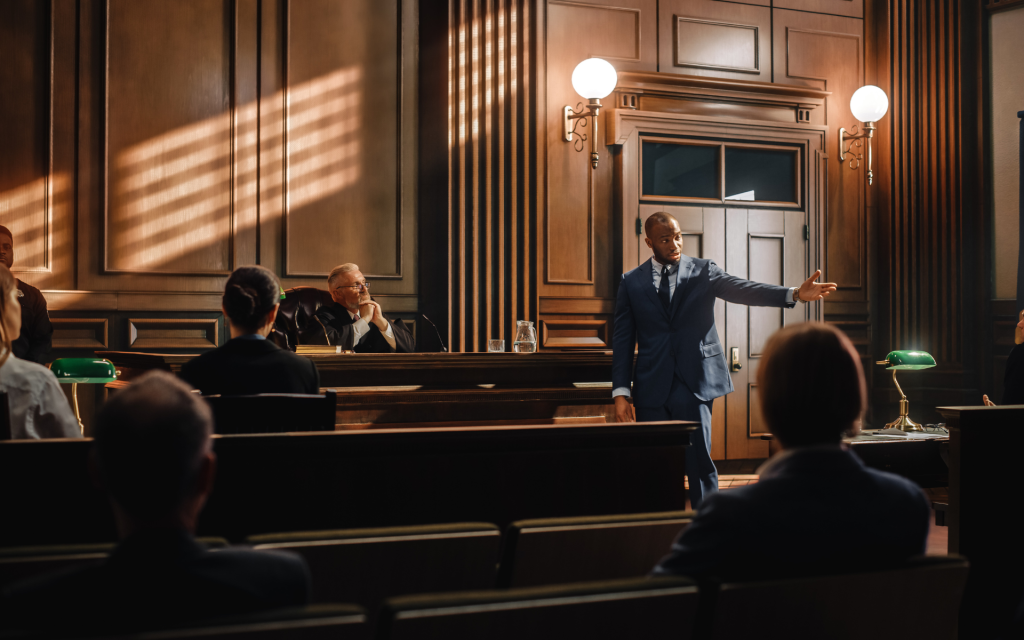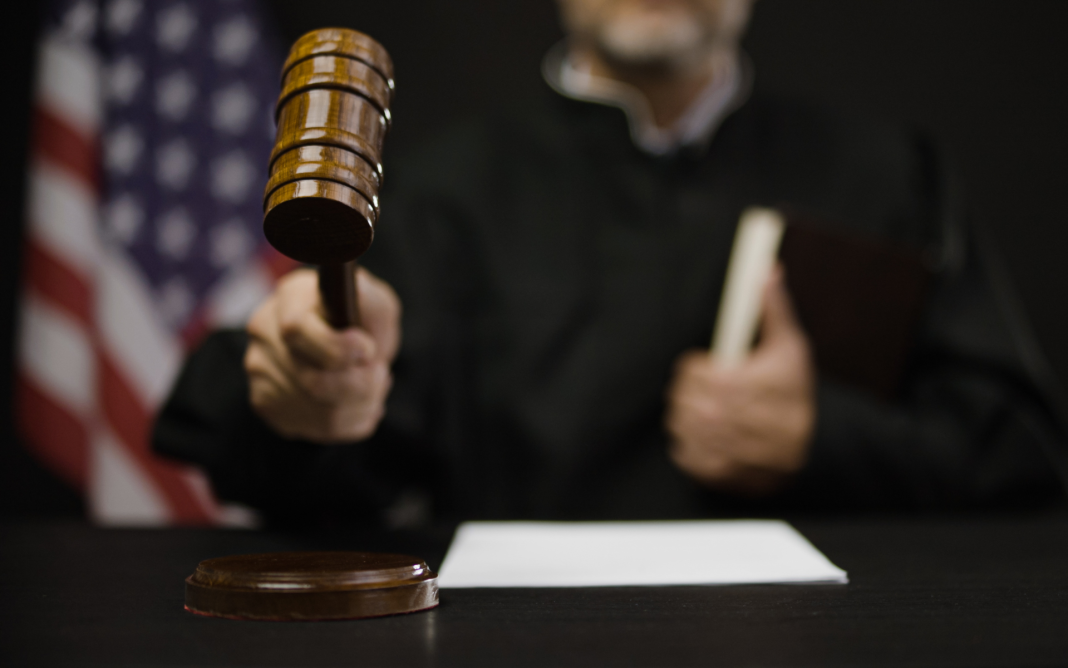[Editor’s note: This story was originally published in the 2020 issue of The International Jurist magazine. It has been updated in particular places for relevancy.]
The U.S. is a nation of laws, but the way the legal system is structured can perplex a foreign attorney. Here’s a guide to help understand it.
It’s one thing to learn the laws of your own country. It’s another thing to master the legal system of a country you’re not as familiar with. And the United States has a system that’s surprisingly different from other countries.
Take impeachment. If you fully understand that process, go to the head of the class.
“It takes a while to absorb just how different the system is,” said William Ewald, a professor at University of Pennsylvania Carey Law School in Philadelphia.
Ewald has taught a class called Foundations of the U.S. Legal System for over 25 years. He said most LL.M. students want to learn how the U.S. legal system functions from the point of view of a practicing attorney.
Most LL.M. students already have experience working at law firms, and they want to increase their skills, particularly in international business law.
Here, we looked at six important — and surprising — lessons students can learn from the U.S. legal system, no matter what their future career goals may be.
1. Common law versus civil law
Yes, America’s common law system is different from the legal systems of civil law countries. And yes, the differences permeate how each legal system operates. But the dividing line isn’t as distinct as one might think.
Everything you’ve heard about common law versus civil law, and that it’s the key characteristic that sets countries like the United States apart — forget it. It’s not that simple.
While the philosophy behind the two systems is important, there’s not a distinct dividing line.
When the discipline of comparative law arose in the 19th and 20th centuries, the codification movement was in full swing.
In a 2001 lecture, Ewald said: “In these circumstances, it was natural for comparative lawyers to lay great emphasis on codes and the rules of private law, and thus to elevate the differences between England and the Continent into a difference between two ‘legal families’ — the ‘common law’ and the ‘civil law.’”
This is fine for contracts and tort law. But for other areas, such as tax law and criminal law, the distinction doesn’t always work.
“People got stuck talking about these two,” Ewald said during an interview. “But for LL.M.s, it makes very little difference.”
Indeed, there has been an increase in the melding of the two systems. Civil law traditions have drawn from common law, and vice versa. There are differences, for sure, but once you learn what they are and how they impact the way a country operates, you can move on.
2. Mediation can streamline a judicial system
When your car’s engine needs a repair, you take it to a mechanic.
When your court needs a tune up, you call Judge Clifford Wallace, senior judge of the 9th U.S Circuit Court of Appeals.
“I’m kind of the mechanic that goes out and helps them,” said Wallace, who has worked with more than 80 countries to help them improve their judicial systems.
With decades of experience — 15 years as a lawyer followed by over 50 years as a judge — Wallace knows a thing or two about how courts work.
When a judge or a government calls him, he doesn’t tell them how to fix their system. Instead, he presents the best ideas he’s gathered from the U.S. and countries around the world. Then, they can pick what will fit their specific needs.
“The idea is to be more efficient, to be quicker, so the rule of law is improved,” Wallace said.
One way to do that is through more effective mediation programs. And, about 90% of federal cases in the U.S. are settled through mediation.
Wallace said there’s an especially strong mediation program at the Court of Appeals for the 9th Circuit in San Francisco.
There are strict confidentiality rules, so mediation is shielded from the rest of the court’s operations.
“It helps resolve disputes quickly and efficiently and can often provide a more satisfactory result than can be achieved through continued litigation,” Chief Judge Sidney Thomas wrote on the 9th Circuit website about the mediation process. “Each year the mediation program facilitates the resolution of hundreds of appeals.”
In win-win mediation, a neutral third party helps the opposing parties find common ground, so they’re then able to reach a settlement. This saves everyone time and money.
Being a mediator doesn’t require knowledge of the law, Wallace said, but rather a gift for interacting and helping people solve their own problems.
It’s important to make sure mediation is done right, however.
“If they don’t have a concept, it turns into judicial head-knocking,” Wallace said. “That’s what’s happened in some countries.”
3. The American legal system is more adversarial
Some students love the Socratic method, and some hate it.
It’s a staple in many American law schools. It prepares lawyers to think on their feet and argue effectively. So, to know the U.S. legal system, you must know this is how U.S. lawyers are trained.
While the method is sometimes portrayed as professors interrogating their students — see the movie “The Paper Chase” — that is not the goal.
The University of Chicago Law School points out: “The Socratic method is not used at U Chicago to intimidate, nor to ‘break down’ new law students, but instead for the very reason Socrates developed it: to develop critical thinking skills in students and enable them to approach the law as intellectuals . . . The goal is to learn how to analyze legal problems, to reason by analogy, to think critically about one’s own arguments and those put forth by others, and to understand the effect of the law on those subject to it.”
It’s certainly a different style than you may be used to, depending on your country’s education system. Many schools around the world rely on lectures, rather than on this type of back-and-forth learning.
If you’re not used to being called on during class, it can be intimidating, said Connie de la Vega, academic director of international programs at University of San Francisco School of Law.
There is not necessarily a right or a wrong way to teach and learn. A lot of the teaching style has to do with the country’s legal system.
Derek Becker, a 2014 graduate of Marquette University Law School, wrote a blog post comparing his time studying law in the U.S. with his time as an exchange student at University of Copenhagen.
“While the Socratic method may be well-suited for education in a common law system, civil law systems appear to call for a different approach to teaching and learning,” he wrote.
That’s because the legal process in much of the European Union is not as adversarial, he noted.
“Courts do not need to be convinced of which rule should apply and whether an exception exists, and the absence of binding precedent in many civil law systems means that lawyers don’t need to persuade courts that their client’s position is in keeping with the existing case law,” he wrote. “This less adversarial nature of the litigation process appears to be reflected in the legal education methods in Europe, and more emphasis is placed on learning what the law is, rather than on developing argumentation and litigation skills.”
4. Jury trials are more common
Learning the preferred teaching style of the U.S. prepares you for the next topic: how a courtroom operates.

The key thing to remember is that we like to argue.
“A lot of them aren’t used to the kind of oral arguments we have in the U.S.,” De la Vega said about LL.M. students.
So, after a lesson about the cases that are on the docket, she takes students to see a court in action. This way, students can see the interactions firsthand. They see how the two sides interact with the judge and jury, and they see the role of the judges and how they ask questions.
“The arguments are so different, and so are the questions the judge asks,” De la Vega said.
And then there’s the jury.
“There’s a lot of variety around the world in . . . adjudication,” said University of Pennsylvania’s Ewald. “In the common law world, we are an outlier because we still use jury trials for civil cases. And we use them as a matter of course.”
The Seventh Amendment of the U.S. Constitution codified the right to a jury trial in civil cases, meaning that even if the parties involved don’t actually want a jury, the rules and procedures in court must be organized around the possibility of a jury trial.
“It makes the whole system more complicated,” Ewald said.
In much of the rest of the world, it’s common to have civilian input in criminal cases. But for civil matters, such as contract disputes, a judge can make a unilateral decision.
Ewald added that LL.M. students are interested in learning how a civil jury works but that it’s not something they plan to implement in their home countries. It’s a far more unpredictable system than they’re used to.
5. Mastering legal English helps prepare for international legal work
Most foreign LL.M. students already have a solid grasp of English, but are their English skills strong enough for practicing law on the international scene? To know the U.S. legal system, it’s imperative to know the language of the U.S. legal system.
De la Vega co-authored the textbook, “The American Legal System for Foreign Lawyers,” and highlighted key legal words in each chapter. That way, students can learn the material and the vocabulary simultaneously.
Of course, you don’t have to study in the U.S. to learn legal English. Many schools around the world offer courses in this area. But, if you have the chance to perfect your English while earning an LL.M. in the U.S., take it.
6. A country’s ideology is reflected in how it selects its judiciary
How do people become judges in your country?
Perhaps they take an exam to qualify. Or maybe they are appointed.
It’s unlikely that they are elected by the general population. But that’s how it works in the U.S. because of our democratic heritage.
Many people from other countries are perplexed by the U.S. practice of electing judges and prosecutors — and the campaign process that’s involved, including financial contributions and political party support.
“They see that as incompatible with the rule of law,” Ewald said.
Even Sandra Day O’Connor, a former U.S. Supreme Court justice, was against the practice.
“No other nation in the world (elects judges), because they realize you’re not going to get fair and impartial judges that way,” she once said.
But, like it or not, it’s the way America was founded — and it’s key to the lessons you will learn during your education in the U.S.
“The American legal system, to a greater extent than any other Western legal system, encourages the direct injection of democratic values into the legal process,” Ewald said in a 2001 lecture. “Our legal system, like our society, places great emphasis on the value of equality.”

